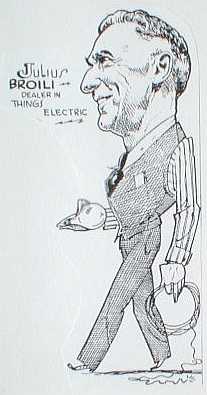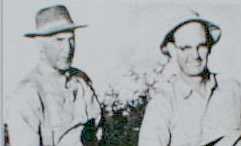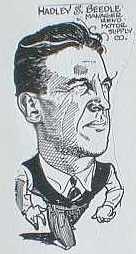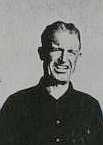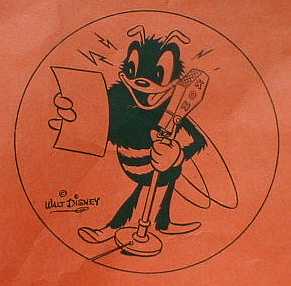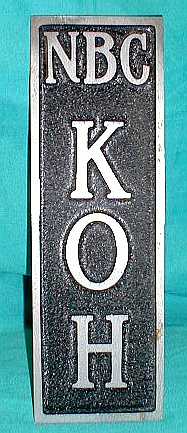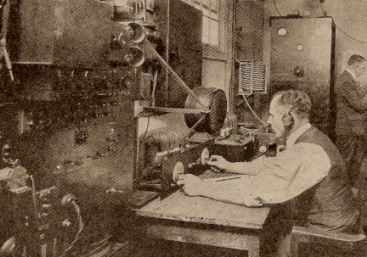|
KGGM &
Jay Peters - Jay W. Peters got his start
in radio broadcasting in Inglewood, CA, in 1927, with a portable
broadcasting station licensed as KGGM.
He operated his station, which was described as a "portable set operated from a
truck," on 1470kHz at a power of 100 watts. On April 27, 1928, the Federal
Radio Commission (FRC) announced that all portable stations would be restricted
to operation on 1470kc or 1490kc and eventually they would be eliminated by July
1, 1928. In an Oakland Tribune article from June
20, 1928, it was reported that four California stations, one of which was
KGGM, were to be banned from operating
by the new regulations that would become effective August 1, 1928 (July 1, 1928
according to FRC.) Peters vowed to fight the new
regulations but he would have had to go to Washington DC on July 9, 1928 to "show
cause." With the ban looming ahead, Peters was hired by the
"Bunion Derby - 1928 Footrace Across America", an event put on by promoter,
Charley Pyle. Peters was to provide live coverage of the race as it left Los
Angeles and was to follow along in his portable station as the race progressed
across America. Interviews with the race participants was part of the coverage
along with entertainment from a 12 piece jazz band. When the race reached Albuquerque, New Mexico,
Peters' truck (bus - see paragraph four) broke down. Apparently, the whole event wasn't going very well and
Peters had not been paid, so he decided to leave the portable radio station in
Albuquerque. Peters quickly reached an agreement to sell KGGM to The New Mexico Broadcasting
Company. The call letters, KGGM, were transferred to the New
Mexico Broadcasting Company at that time, August 1928. This was apparently just
about
the time the portable ban went into effect. Peters also sued Charley Pyle for $3183 in
lost wages and other expenses (listed as cost of station in some sources.)
Peters went on to Reno, Nevada to start a new broadcast station. He may have
known that Reno had been without a local broadcast station since the closure of
KFFR in 1924 but this is purely conjecture.
The Myths &
the Facts - A commonly heard version of the story
relates that the call letters KOH were assigned to Jay Peters and his
mobile station in 1922, however there are no Department of Commerce (pre-1927) or Federal
Radio Commission (1927 or later) records showing that the call KOH was
assigned to Peters before September, 1928. The story of an early twenties assignment of
the KOH call to Jay Peters probably originates from a belief that the
Department of Commerce issued all early broadcast stations three-letter calls first,
followed by four-letter calls later, which isn't true. Actually, three-letter calls were
initially issued to ships and commercial shore stations, (an International agreement
dating from 1908.) Due to maritime superstition, ships that met with a disastrous end did
not have their calls re-issued to other ships. Apparently, if the ship was sold to another
country, then the three-letter call was also not re-issued. The first broadcast call
issued was a four-letter call, KDKA, but immediately thereafter, the
Department of Commerce started to issue "retired ship" three-letter calls to
many applicants. Through 1922, while most applicants received four-letter calls, some
stations would be issued the old ship three-letter calls. After 1923, the Department of
Commerce had a change of plan (they had many) and three-letter calls were only issued
randomly, perhaps by special request or perhaps as they became available from recently
retired ships. According to Federal Radio Commission records, the last three-letter call
issued to a "new station" was KOH, issued to Jay Peters on
September 13, 1928. While three-letter calls were sometimes re-issued and changed for
"existing stations" after that, no other three-letter call was issued to a
"new station" after KOH.*
A commonly heard story, (told by Walt Mulcahy), has Peters as a dealer in radio transmitting equipment arriving in Reno to
demonstrate a mobile transmitter/station to investors who wanted to build a new broadcast
station for Reno. Peters found that the investors would not accept an order for equipment
but insisted upon buying the actual demonstration mobile transmitter (which
supposedly was hauled around on a trailer.) The buyers prevailed
and the entire equipment package was purchased and Jay Peters hired to set-up and operate
the new station. Some of the prominent investors were H.E. Saviers and Son, Inc. (Reno's
largest dealer in radios and phonographs), Sierra Pacific Power Company (may have actually
been the Truckee River Power Company at that time) and the Reno Chamber of Commerce. It is
likely that Peters told the story of his KGGM sale in Albuquerque to his
many friends and the location of the sale became confused after the story was retold by
others. The documented evidence has Peter's mobile station, KGGM,
transferred to The New Mexico Broadcasting Company in August 1928.
Another frequently
heard version of KOH's origin supposedly starts in 1927, with Peters building a
mobile broadcast station in an old bus. The antenna was supported by two A-frame masts
mounted on the front and rear bumpers. Though this bus-station was almost
certainly a reality, in this hearsay version, Peters did not have a broadcasting
license and traveled around Nevada broadcasting radio shows using whatever local
talent he could find. When Peters arrived in Reno, he continued to operate his
mobile station around town without a license however he was approached by "radio
officials" who informed him
a license was going to be required and the station had to cease mobile operation
(likely confusion with the KGGM ban of 8/28) The story continues that Peters
applied for a license and was given the call letters KOH.
Except for the bus-station, all of this story is fabrication based on a few
confused facts. The KGGM Bus-Station was likely a reality. The facts are based on a photograph that Peter's had of a
(his) mobile station that was built into a
bus. Robert Brannin had actually seen the photo that Peters had of his
bus-station. An article in
"Popular Communications" magazine mentions that "the bus broke down" when
Peters' KGGM was stranded in Albuquerque (but this is the only reference
to a "bus mobile station" in print.) It is likely that Peters
installed his portable transmitter on a bus specifically for the "Bunion Derby"
trip, after all, he was going to need someplace to stay during the cross-country
trip. As with much of the early history of KOH, Peters' re-telling of his adventures to his friends in Reno (plus the
photograph of the bus) probably became confused in multiple re-tellings by
Peters' friends and consequently we have the Bunion Derby confused with
the August, 1928 Portable Station ban and the ultimate sale of the KGGM
portable (bus) station to The New Mexico Broadcasting Company combined into the
fabricated stories that have become popularly believed myths. The facts are that
all pre-Bunion Derby printed sources say that KGGM was a "portable set operated from a truck"
(Oakland Tribune and the Los Angeles Times) while the only post-Bunion Derby
source (Popular Communications) states that the station was installed in a bus.
These facts along with the Peters' bus-station photo make it likely that the
KGGM bus-station was a reality.
It is most probable that
Jay Peters arrived in Reno in August 1928 (after selling his portable transmitter to the
New Mexico Broadcasting Company) with the intention of building a new radio broadcast
station. The financing probably did come from the larger Reno businesses mentioned by Walt
Mulcahy. The decision was made to set-up the transmitter at Blanch Field Airport. Peters
applied for a broadcast license at that time and was assigned the call letters KOH
on September 13, 1928. The remainder of the KOH story that follows is
from old Nevada State Journal and Reno Evening Gazette articles along with the FRC/FCC
records.
From the
Newspapers - Peters located the
new station's studio in the basement of the Elks' Club on Sierra Street, (he was quite
active in the Elks.) The transmitter was located at Blanch Field Airport. The debut
broadcast was to be on November 11, 1928 (to honor Armistice Day) but on-the-air
testing between 4AM and 8AM the morning of October 27, 1928 proved so successful that KOH
went directly to full-time broadcasting running 100 watts on 1370kHz.** This early
debut also allowed KOH to take advantage of the lucrative political
advertising for the upcoming 1928 Presidential Elections in November. In fact, KOH
even carried the election returns in a joint effort with the Reno Evening Gazette on
November 6, 1928. KOH had a seven man crew, which was the largest for a
radio station in Nevada up to that time. KOH was the first professionally
operated, commercial radio station in Nevada, (the pioneer broadcasters - Broili, Beedle
and Sparks HS/NSJ - were barely more than amateur stations and really didn't net any
income from their stations.)
The Sacramento Bee bought
the KOH operation in early 1931. Apparently, Jay Peters had arranged for
the Sacramento Bee to operate KOH before the actual sale took place. A
REG article of February 18, 1931 states that the sale took place "today." The
actual sale was probably not obvious to listeners since the Bee was already operating the
station anyway. The sale allowed for expansion of the KOH operation and,
by April, new facilities were ready. An advertisment in the REG of April 8, 1931 states
that KOH was now affiliated with CBS and would also run Don Lee programs.
It is still being shown as "operated" by the Bee and owned by Jay Peters, Inc.
Additionally, their new (or rebuilt) 500 Watt transmitter now had "perfect modulation" and
provided static free listening. KOH had moved to the Steinheime Building
near 5th Street and Virginia St. in downtown Reno. With the move came the increase in
power to 500 watts and a frequency change to 1380kHz***, (which gave KOH
a clear channel to the west.) The antenna was located between two, 100 foot tall
wooden poles, one mounted in the sidewalk on Virginia St., the other at the back of the
property. Each pole weighed seven tons! KOH called itself "The
Voice of Nevada."
|
 |
In 1939, KOH
applied to the FCC to increase power to 1000 watts and to change operating frequency to
630kHz. Los Angeles radio station KFI (640kHz) filed an opposition but
lost its appeal in December, 1939. KOH had purchased 20 acres in Sparks
for the antenna site and eventually spent $50,000 for two towers, transmitter, station house
(in Sparks) and a new studio at 143 Stevenson St. in Reno. It was August 23, 1940 when the
KOH operation was moved into their new facilities, which featured two
"state of the art" studios at the Stevenson St. location.
The photo to the left shows the
South tower as seen from the North tower. The photo was taken
July 4, 1940 by two men that climbed the North tower. The photo
is looking south from the Sparks location toward what would now
be Hidden Valley to the far left (out of the photo it's so far
left) and Bella Vista Ranch area behind and to the right of the
pond. At this time in 1940, this area was entirely
ranch and agriculture land. The pond probably belonged to the ranch house located off to
the left of the pond (white two-story house) and was probably
fed by Steamboat Creek. This area today is almost entirely
urbanized but the Steamboat Creek water run-off is now directed to the east of Veteran's Parkway and
running down the east side of the valley to the Truckee River.
The photo below right shows
Morgan Morise, one of the two men who climbed the KOH North
tower, on July 4, 1940. Morgan is taking time to wave at the
camera as he is about half way up the tower. Note at the tower
base there are indications of the radial system to the lower
right of the base. Also, note that the rungs that are dominate
in the foreground of the photo are part of the tower-mounted
ladder. Morgan is apparently standing on the tower behind the
ladder and holding on to one of the ladder rungs with his right
hand. |
|
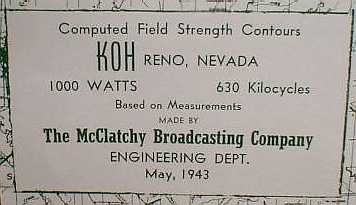
The map below is from a 1943 "Intersection Study"
showing the coverage KOH had running 1000 Watts on 630 KC. The Field
Strength Contours map shows the radiation pattern out to .5mV/M and is similar to the
color coded map on the left. At this time, McClatchy Broadcasting called their line of
stations "THE BEELINE" and it included, KFBK in Sacramento, KWG
in Stockton, KMJ in Fresno, KERN in Bakersfield along
with KOH in Reno. |
|

|
|
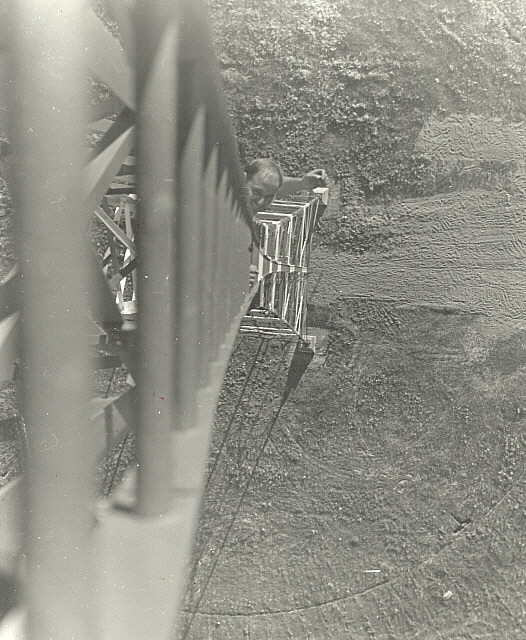 |
|
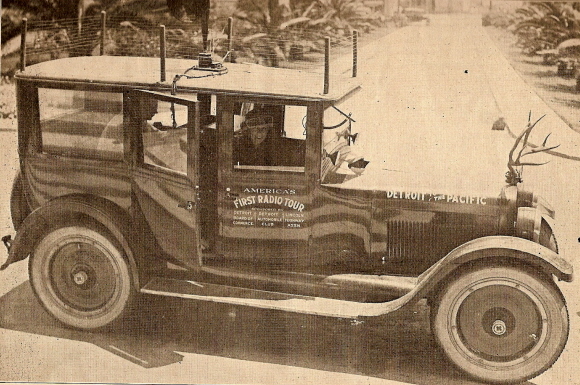
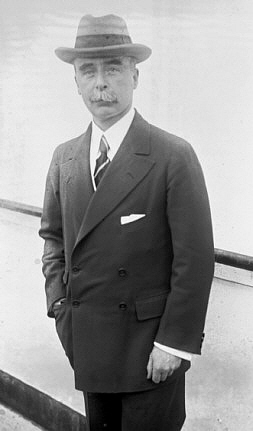
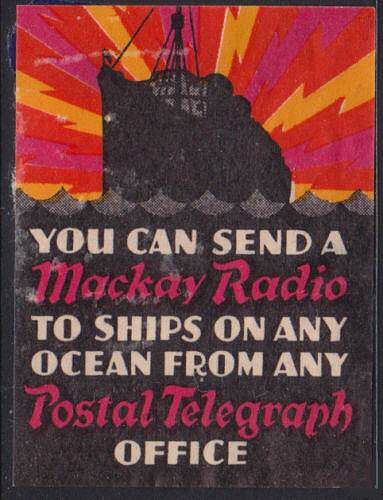
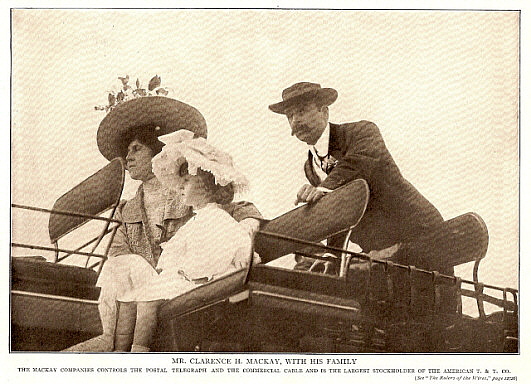
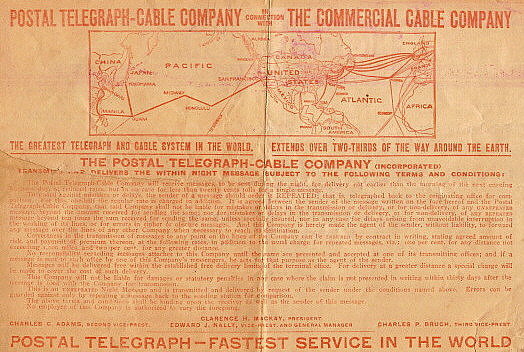

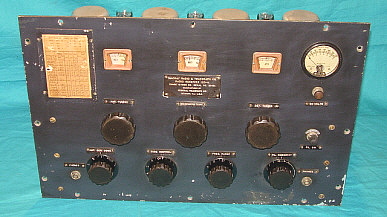
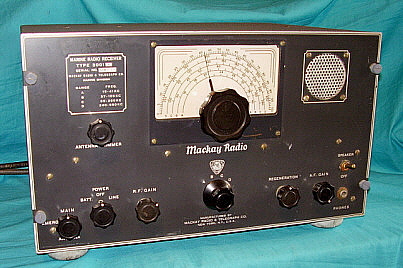


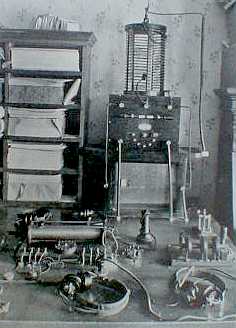


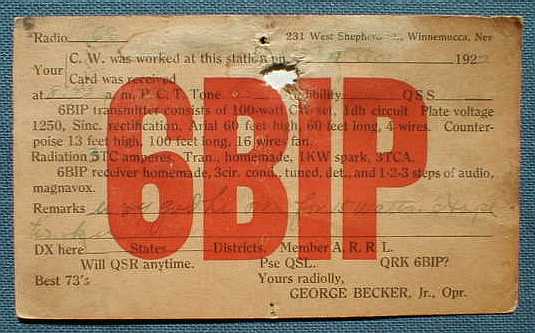
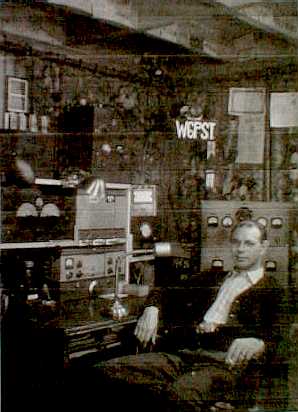
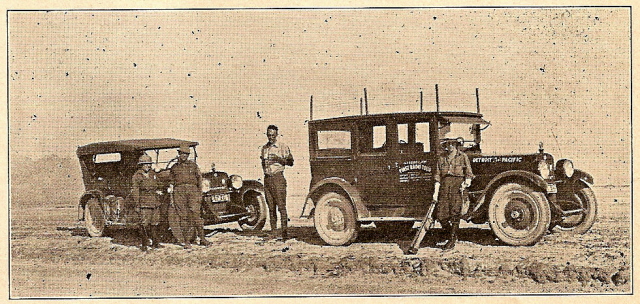

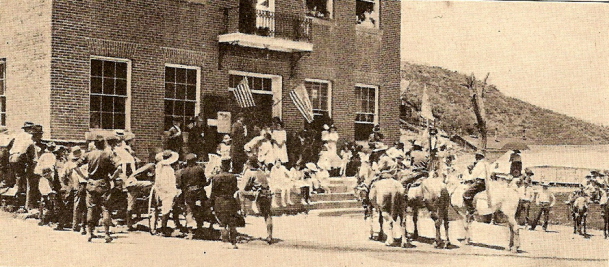

 The University of Nevada about 1922
The University of Nevada about 1922